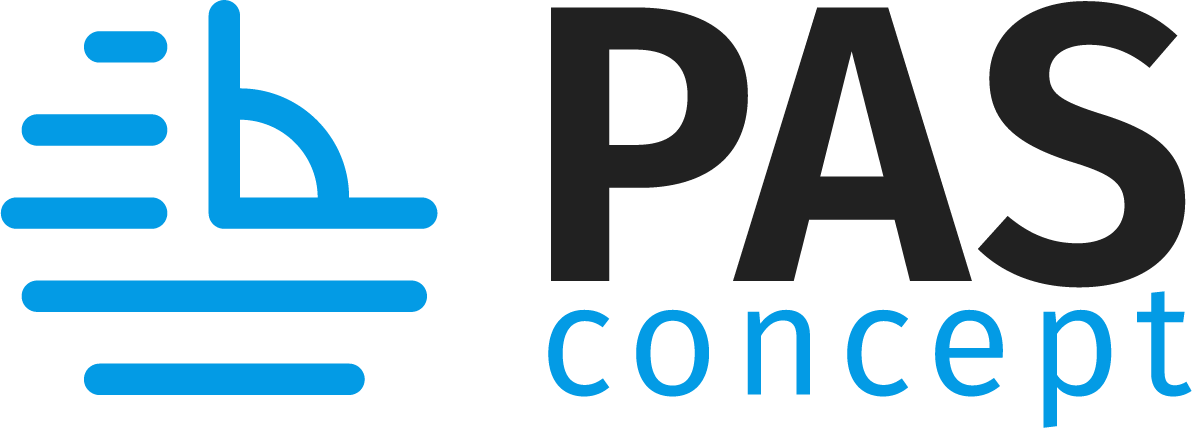
Organizing your Project for Success
Many of us grow up hearing expressions such as “time flies”, “time is money”, “time waits for no one”, and many other sayings that emphasize how important our time is. It is not until we are conscious of the value of time that we realize all of these phrases are in fact true. But, why is time so important? What is it about time that everybody seems to be so concerned about? The common answer is that we are worried about not having enough of it. But is this really true? Do we not have enough hours in the day to perform all the activities we should be completing? This question may have many answers, but when it comes to your architectural or engineering business you at least want to make sure the time of your employees is being optimized.
Time & Efficiency in the Design World
When it comes to architectural and engineering designs, time plays a very important part in the execution of each project, hence efficiency within those hours becomes critical as well. Because we know the industry and we are aware of the many obstacles that arise provoking changes in schedule, we have identified key components of design projects that could be helpful when it comes to organizing your project. In this article, we will give you some tips that will help increase your company’s efficiency to make the most of your time.
Congratulations, your client Accepted your proposal! Now what?
You have the skill and know-how to do the work, but can you do it in a way that minimizes the project’s overhead, reduces employee time, and maximizes your profit margin? In this article, we will be going over a proven method to ensure you are making the most out of every project!
Project Information
This is the heart of the project. You should have all the key information about a project and its client consolidated in one easy to find place. Taking the time to organize your project before you start will significantly reduce the potential margin of error and risk related to any project. Collecting the following items in one place will prove a useful tool for administrators and employees.
General Project Information
- Project Number: This should be unique for every job.
- Project Name and Physical Address
- Client Name: This is the company which has hired you to perform the task/job.
- Client Contact: This is the key point of communication at the Client company
- Project Owner: The Client personnel who can approve or reject project items
- Brief Project Description
- Project Type, Sector, Use and Occupancy
- Architect/Engineer on Record
Internal Information
- Project Manager: This is the lead of the project in your office.
- Budget
- Status: The current status of the project. This will vary over the lifecycle of the project.
- Billing Type: How will this project be billed? By key deliverables, by the hour, by phase, etc.
- Key Dates: Start Date, Deadline, Signing Date, etc.
Payments and Invoices
Knowing exactly how much you are owed at any given time is essential for a healthy project and best business practices. The financial portion of a project can often be a source of frustration and headaches. However, it doesn’t have to be so. Simply by keeping track of the following elements you can keep your books up to date and gain peace of mind.
Invoice Types
Choosing the right type of invoice for the project is key. The primary types include the following:
- Payment Schedule Invoices: These invoices are typically defined in the proposal, each representing a percentage of the project’s total. (i.e 50% 50% or 10% 60% 30%, etc).
- Progressive Invoice: This type of invoice is typically variable in nature and determined by the percent of completion of project elements such as Service, Phase, or even the project as a whole.
- Simple Charge: This is a dynamic invoice that does not derive from any of the above factors. Simple Charge invoices can be generated as needed.
Payments
Keeping track of payments is made much easier once you’ve selected the appropriate type of invoice. Associating payments to a corresponding invoice makes it easy to track what you are owed at any time. While sending invoices is easy, getting paid can often be difficult. A best practice is to add specific payment terms to each invoice that determines the due date (Net 7, 10, 30, 60, 90, etc). These imply that the net payment is due in either 7, 10, 30, 60, or 90 days after the invoice date. For example, if the invoice was dated June 10 and you used one of the most used payment terms, Net 30, then the payment would be expected before July 9.
Key Invoice Tracking Factors
- Invoice Number: This should be a unique number given to the invoice.
- Type: This should reflect the type of invoice.
- Description: A description of the relevant/key items in the invoice.
- Due Date/Terms: This should demonstrate the due date of the invoice.
- Total Amount: This figure represents the total value of the invoice.
- Amount Due: This key figure can change based on a client’s partial payment.
- Emitted Date: This reflects the date the invoice was sent to the client.

Project Expenses
Whether derived from internal employee time or subcontractor costs, it is important to know exactly where your money is going. Without proper observation of a project’s expenses, it becomes easy to eat away at a project’s potential profit margin. With minimal effort, you can always ensure a project is on track and on budget.
Key Expenses
- Employee Hours: One of the largest expenses any job can incur is the time and energy of your employees. Keeping careful track of your employee’s time will always keep you thoroughly informed as to the status of your project.
- Subconsultant/Subcontractors: On occasion, you may find it necessary to get outside help to complete a project. Sub fees can rack up quickly if you don’t track them carefully.
- Material Purchase Orders: All purchase orders associated with the project should be kept well organized.
- Misc. Expenses: Any additional expenses.
Maximizing Time Tracking
With just a few key details you can make time tracking easy for your employees while collecting the maximum amount of information needed for you to properly track your project. When tracking time it is important to collect the following information:
- Employee Name
- Date
- Job/Project
- Task Name
- Short Description
Permits and Revisions
Every city and county is different but nearly all of them require permitting. Keeping this in order will stop a lot of headaches. A unique factor for projects for Architects, Engineers, and others is the presence of Permits and Revisions. On occasion, you may need to get external approval for a facet of your project or a permit to move forward with a specific phase.
Key Tracking Points
- Reference Number: The reference number provided to you by the approving organization.
- City/County: The regional organization providing approval.
- Department: The department pertaining to the organization providing approval.
- Submission Date: The date your company submitted for approval.
- Status: This variable field should reflect the current status of the permit/revision.
- Close Date: Whether approved or denied, the date in which the determination was provided is an important detail to keep track of.
- Reviewed by: Similar to the Closed Date, the specific individual who provided Approval or Denial is an important factor to track as well.
Project Files and Notes
Ensuring that all of the key players in a project have easy and direct access to the documents they need will save them time and save you money. Keeping files and documents related to the project may prove difficult considering they may pass through many hands and may even have various iterations.
Store Documents in a Shared Location
It’s tempting to just save everything to “My Documents,” but that creates two big problems. First, other people in your company won’t be able to access those documents. You need to make sure you’re saving files on a server, network drive, or other shared location. Shared cloud storage can be an even better option.
Use Good File Naming Conventions
Use clear, descriptive file names that make it easy to identify what’s in the file, no matter where it is. Here are a few best practices from Stanford:
- Be concise; some software doesn’t work well with long file names.
- Use descriptive information.
- For dates, use a YYYYMMDD or YYMMDD format, so dates stay in chronological order.
- Use sequential numbering (01, 02, etc instead of 1, 2, etc).
- Avoid special characters (like ~ ! @ # $ %, etc).
- Use underscores (file_name) or dashes (file-name) instead of spaces (file name).

Key Performance Indicators
Even the best-organized project can still go awry, this is why it is important to continuously observe key performance indicators to ensure your project is on track. Now that your project is well organized you can use the time you’ve saved to focus on the key points of a project to ensure that your project is on track and within budget. Additionally, you can also view key points to ensure your company is on the right track.
Cost Performance Indicator (CPI)
This engineering KPI metric is used to determine how well a project went from an engineering cost perspective. To do this, the CPI takes the budgeted cost of work performed and divides it by the actual cost of work performed. A value greater than one is favorable, as it means the project came in under budget. (CPI = Budgeted Cost of Work Performed / Actual Cost of Work Performed).
Schedule Performance Indicator (SPI)
Similar to the CPI mentioned above, this engineering performance metric measures the budgeted cost of work performed by the budgeted cost of work scheduled. This helps to indicate how far along a project is compared to the schedule, based on the project budget and work billed. (SPI = Budgeted Cost of Work Performed / Budgeted Cost of Work Scheduled).
Project Margin
Each project that a firm works on will have a certain level of assumed profit built into the fees. The project margin metric measures the profit of a certain project relative to revenue. There needs to be a fine balance of healthy profit, but not so much that clients feel they are being ripped off. (Project Margin = ((Project Revenue – Project Costs) / Project Revenue) * 100).
Ongoing Budget Usage
By having a robust awareness of the direct and indirect expenses associated with a job you can easily observe how much of the budget has been consumed at any given moment. A common practice is the use of a company Multiplier. A company multiplier takes into account the operating costs of the company and ensures that overhead and profit margin are considered when each direct cost affects the project budget.
Ready to Organize your Project?
Organizing your project will be a relevant effort to boost efficiency within your company. In the beginning of this article we opened with a debate of not having enough hours in a day vs not being efficient with those hours. Life will happen and your personal expectations of how you manage your time will vary from time to time, but at least you can count on organization being the key factor to improve efficiency in your business place. PASconcept provides a turn-key solution to organize your architectural and engineering projects under one web-based platform. Are you ready to innovate? Contact us today for a free demo and learn more about the world of PASconcept.






